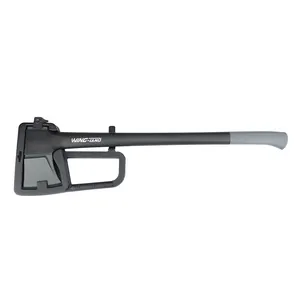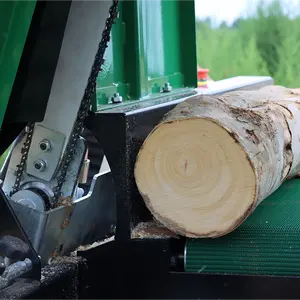(21273 products available)









































































































































































































A wood splitter, also known as a log splitter, is used to split logs to turn them into smaller pieces of firewood. The process of cutting firewood becomes very easy and much more efficient because of this powerful tool.
A wood splitter works by forcing a sharp wedge through the center of a log. It splits a bigger piece into smaller, more manageable pieces. There are different types of wood splitter. One type of these splitters is gas-powered. A gas-powered splitter has a high driving force and works well with large logs. An electric wood splitter is quieter. It is compact, too. It is more suitable for smaller logs. Last but not least, a manual splitter uses the user's muscle strength. It is mostly recommended for lighter work. Choose the type of splitter based on the size of the logs. This strategy works best in most cases.
A wood splitter drill bit, also known as a log splitter screw cone, makes splitting firewood easier. These bits are made from high-strength materials and are designed to deliver an effective drilling experience. The method of installation is simple, too.
When considering a wood splitter for sale, consider the splitting force and see if it matches or resonates with the type of project. Many non-commercial projects don't need excessive force. Consider the type of wood that will be split using the wood splitter. Some wood species are harder than others. Next up is choosing the right power source. Once the above decisions are made, look for a frame built of heavy-gauge steel. Check the welds and bolts. Also, please take into consideration the engine size and horsepower as they reflect how efficiently the splitter will work. Some wood splitters can be customized. See if there is a need for such a modification. Thorough research about reliable products goes a long way; don't underestimate it.
Any type of wood splitter needs proper maintenance to stay up and running while effectively performing the desired functions. Before starting out with any maintenance activity, disconnect the wood splitter or turn the engine off. Check repair and maintenance instructions for the specific model and get started. Some basic guidelines include checking and cleaning the engine oil. Regularly monitor the hydraulic fluid levels. Look for any signs of trapped air. It can affect the hydraulic system negatively. Sharpen the splitting wedge. Check it for any nicks, dents, or dull edges. If any of these signs show up, know that it is time to sharpen the wedge. Use a flat metal file to sharpen the wedge after securing it properly in a vise. The ideal angle for sharpening the wedge is around 30 degrees. Don't make the edge too thin. File along the beveled edge, maintaining the correct angle. File along the beveled edge, maintaining the correct angle. Run a finger along the edge (carefully!) to check for sharpness. If it feels smooth and sharp, it is good to go. It is important to check the wood splitter regularly for rust. A good practice is to ensure all parts are well-lubricated and clean before, during, and after the wood-splitting season.